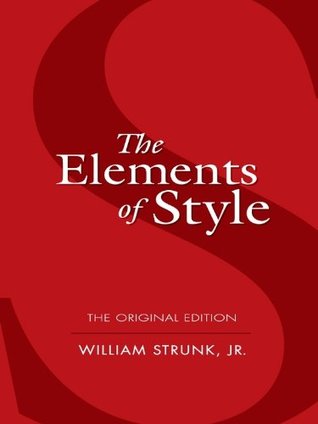More on this book
Community
Kindle Notes & Highlights
Started reading
May 22, 2020
It is an old observation that the best writers sometimes disregard the rules of rhetoric. When they do so, however, the reader will usually find in the sentence some compensating merit, attained at the cost of the violation. Unless he is certain of doing as well, he will probably do best to follow the rules.
participial phrase at the beginning of a sentence must refer to the grammatical subject. Walking slowly down the road, he saw a woman accompanied by two children. The word walking refers to the subject of the sentence, not to the woman. If the writer wishes to make it refer to the woman, he must recast the sentence:
Make the paragraph the unit of composition: one paragraph to each topic.
9. As a rule, begin each paragraph with a topic sentence, end it in conformity with the beginning.
Ending with a digression, or with an unimportant detail, is particularly to be avoided.
As a rule, avoid making one passive depend directly upon another.
A common fault is to use as the subject of a passive construction a noun which expresses the entire action, leaving to the verb no function beyond that of completing the sentence.
Many a tame sentence of description or exposition can be made lively and emphatic by substituting a verb in the active voice for some such perfunctory expression as there is, or could be heard. There were a great number of dead leaves lying on the ground. Dead leaves covered the ground. The sound of a guitar somewhere in the house could be heard. Somewhere in the house a guitar hummed sleepily.
Put statements in positive form. Make definite assertions. Avoid tame, colorless, hesitating, non-committal language. Use the word not as a means of denial or in antithesis, never as a means of evasion.


